views
Chemical Distribution in Microsoft Dynamics 365
AT A GLANCE
- Failure to meet customer demand at Chemical Distribution companies
- Overview of End-to-End supply chain processes including solutions to increase operational efficiencies
- Overview of planning and inventory management for bulk chemicals and packaged chemicals
- Best practice depictions of typical Chemical distribution processes including the need to track hazardous chemicals, product labels, shipping labels, safety data sheets, certificate of analysis and shipping documentation
- Quick glimpse of a chemical distribution company in Microsoft Dynamics 365
If you are a chemical distribution company, it is all about optimized supply chain, warehouse and floor operations. In the current day, you are more a supply chain partner to your customers, anticipating their needs and helping them stay ahead of their competition.
Chemical distribution industry is on a massive growth curve now more than ever. There is a need to set your processes straight and streamline supply chain with sufficient controls in place to keep up with the pace of the market.
You need to organize your warehouse in a way that can provide an optimized pick route for your warehouse operator to pick inventory for break bulk, repack operation or an outbound shipment. Inventory transactions and storage need to be planned with precision while handling hazardous chemicals (HAZMAT).
There are 4 key processes that matter to a chemical distribution company:
- Order-to-Cash: Ability to take a customer order efficiently and deliver within the shortest time / customer requested date.
- Procure-to-Pay: Ability to manage purchase orders and receiving efficiently, optimize spend on procurement to avoid high capital inventory spend.
- Inventory Management: Maintain optimal inventory levels without excessive capital spend. Ability to conduct inventory operations seamlessly with the desired visibility.
- Break Bulk Operations: Applicable if you receive in bulk totes, drums or tankers and do pack-downs into smaller pack-sizes.
From 2012 through 2017, specialty chemical distribution increased by a compound annual growth rate (CAGR) of 5.6% each year, to a global market size of about €97 billion.
There is also an anticipated growth in specialty chemical distribution, which will ease slightly, to 5%, through 2022-BOSTON CONSULTING GROUP
The Pain Point – Warehouse Chaos & Lack of a Trace on Inventory Movement
If this connects with you, then you are one of the many companies that suffer with lack of inventory optimization and procedures to move inventory from cradle-to-grave in a methodical manner.
This article provides insights on key processes within Chemical Distribution companies and the value delivered by Microsoft Dynamics 365 for Finance and Operations to this industry.
User Story
One of our chemical customers has 3 big warehouses with bulk as well as packaged chemicals stocked in row, rack and bins spread across multiple aisles. Some of these chemicals require temperature control and many have restrictions on how they need to be stored to avoid hazards. Their focus was just the basic must-haves and not necessarily a well-organized warehouse. The warehouse space was highly disorganized making it difficult to track inventory movements in and out to fulfill customer demand.
To top it off, operators had poor operational practices of inventory movements to staging. One of their high volume orders involved a break-bulk operation from a 55 gallon drum of bulk chemical. Operators would carry the drum to staging, dispense the chemical for the order and leave the drum at staging without recording the location / remaining inventory for the batch. At best, inventory numbers were manually written on a tag attached to the drum and not within the system.
This process created many inefficiencies downstream:
- The physical space within “Staging” was limited. However, the drums and totes for most break-bulk orders were still left at staging. The size of staging grew everyday. The system showed the drums to be still at their primary inventory location. When picking for an order, the operators check the primary location first and when they cannot locate the drum in inventory, they launched a massive hunt for the missing drum in staging by manually checking each tag. With time, some operators developed tribal knowledge on where to look for inventory – staging or primary. For other temporary workers, it was extreme inefficiency.
- Lack of a method to properly track inventory movement.
- Inventory counts were completely inaccurate as they would constantly adjust inventory for missing / untraceable inventory.
- With inaccurate counts, planners ordered more supply to fulfill customer demand.
- The inaccurately stated inventory caused over-supply and more bulk material than needed / could be handled.
- Due to the chaos, conducting a physical inventory count was a Herculean task. As the operators traced the missing inventory stuck at unplanned staging locations, it caused further imbalance of inventory in the warehouse.
The Ideal Journey
Be it chemical manufacturing or distribution, you need to analyze how your company operates, your growth initiatives and business goals for the next 5 years.
Below are a few points that can help improve your operations:
- Review your warehouse storage and design – locations and inventory groupings.
- Create proper location directives to adhere to all restrictions on chemicals based on properties.
- Number your locations by aisle, row, rack and bins or aise, row and rack to the bare minimum.
- Stock your fast moving items optimally to speedup packout work orders and shipments.
- Label the bulk containers at the time of receiving with a barcode that can be scanned.
- Label the put away locations as well as staging locations to count how many items and quantities by lot are available at a specific location.
- Give the warehouse user the ability to sign in to a mobile device to scan a work order that provides real time work details and status of orders.
Inventory that is accurate and visible is the key to efficiently operate a chemical distribution company
Chemical Industry – Process & Procedure
You will notice some commonalities between manufacturing and distribution of Bulk / Speciality Chemicals with respect to receiving, inventory, planning, shipments and warehouse management.
The basic processes within chemical distribution industry are centered more around warehouse management, inventory, planning, repacking, light manufacturing, shipping and receiving. While Chemical Manufacturing also includes extensive route operations, resources and elaborate Work-in-Process (WIP) testing.
Let us dive into typical processes within a Chemical Distribution company:
01. Purchasing and Receiving
Purchased products are bulk chemicals, packaged chemicals, packaging items, labels and other supplies. These products are almost always purchased from an approved and primary vendor / supplier.
There are 2 statistics that determine the course of action with respect to future purchases that could be shown through reporting and analytics.
- Your buyer’s decision to ‘switch to an alternate vendor’ for a specific purchase, and the number of times ‘a switch to an alternate supplier’ occurs.
- A vendor rating that depicts the percentage of purchases that were delivered on time and in full is another statistic that your buyer may be interested in.
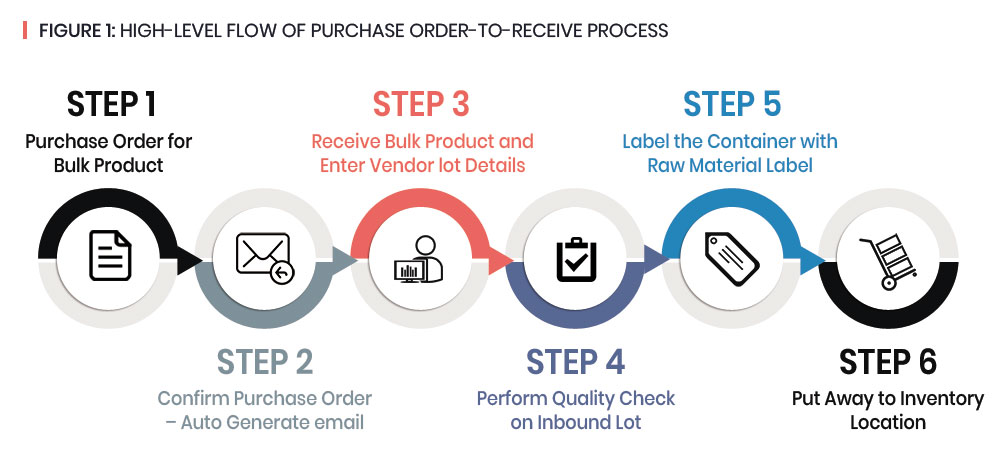
02. Inventory and Warehouse Management
- Organize by aisle, row, rack, bin, lot / batch, pallet IDs and box IDs. Your materials manager that is responsible to organize the warehouse is always looking for ways to stack inventory into row, rack and bins by pallets with a license plate number. The pallets could be scanned to easily retrieve inventory using a mobile device.
- Organizing inventory through optimization of the warehouse is the primary responsibility of anyone keeping inventory counts accurate.
- Majority of the issues within your warehouse are with respect to lost inventory, inability to track a product, incorrect counts or products constantly showing up in wrong locations, especially at the time of physical inventory or when inventory inspections are done. The overall chaos could be attributed to multiple issues in processes and inefficiencies within methods.
- Being able to track-and-trace inventory, especially when you are performing repack operations, requires visibility of how inventory is moving into pack sizes.
- Labeling of all locations in the warehouse is critical to streamline operations. Labeling of the locations can be done a couple of different ways – Serpentine and Standard Methods. Most companies follow a 4-dimensional naming standard – Aisle-Rack-Row-Bin.

03. Materials and Capacity Planning / Master Planning
- As a Chemical distribution company you need to plan for break-bulk / repack, labeling operations and need to track capacity of human resources, label printers, packaging machines etc.
- Typical operations involved such as repackaging or break bulk would require those stations to be available along with operators who perform the operation.
- Planning supply demand signals for distribution is a challenge of its own, however when done correctly, there is no better solution to fulfill orders.
- Be it static or a dynamic plan, there are daily decisions made on how to allocate inventory for a certain repack order.
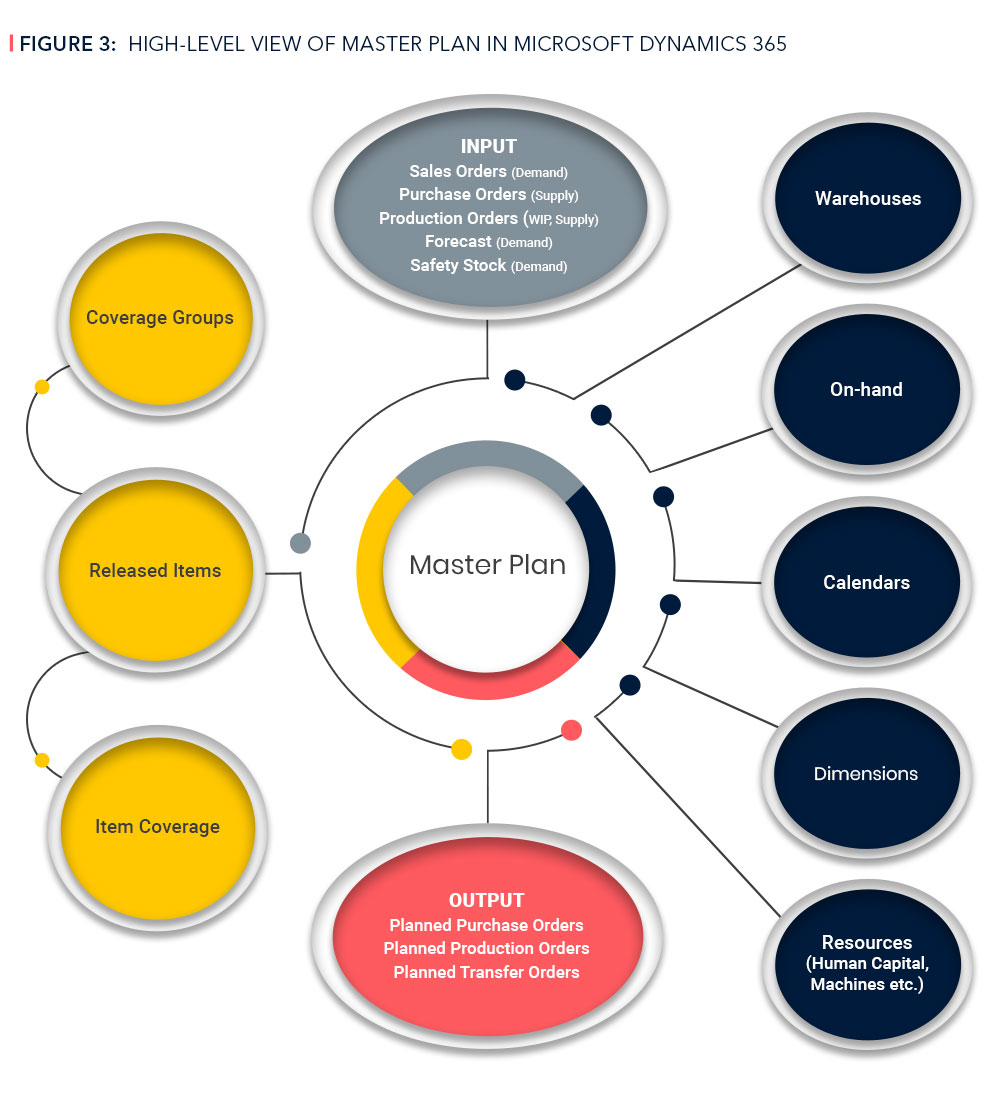
- Being a distribution company, you see fast moving or express items that require your planning to be more agile and be able to operate on a net change mode rather than a complete recreation every hour. Providing that flexibility would help your planner make key decisions and set priorities on work orders to optimize the work effort.
04. Production and Packaging
- Production in Chemical Distribution companies includes light manufacturing operations such as repack and break-bulk. A bulk container is opened to consume quantities in the base unit of measure such as kilograms or pounds and yield packages in eaches to fulfill a sales order.
- The work order includes operations such as Filling, Packing, Labor, Quality and Labeling. The produced yield will give you the quantities and cost to produce each bottle / container.
05. Labeling
Labeling would be an additional operation on the shop-floor work order. An integrated label management solution would be an ideal to be included within the workflow of the business process.
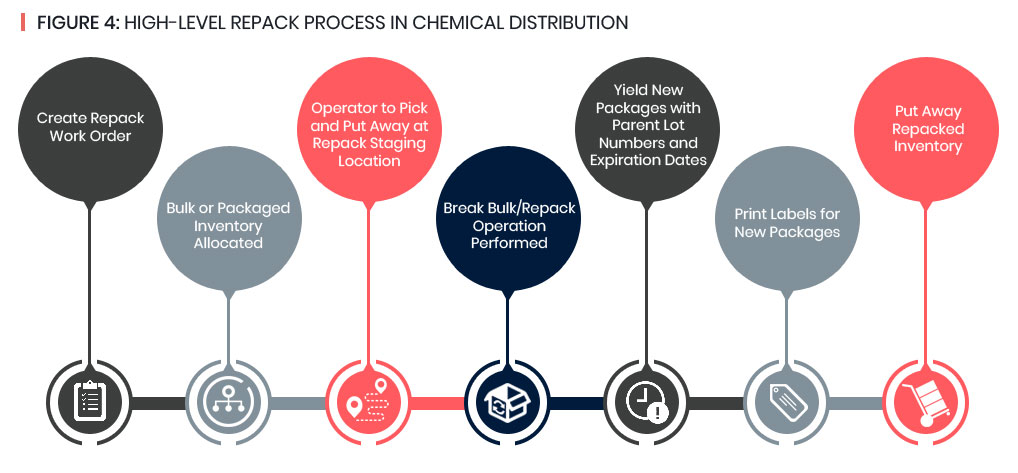
06. Order Management
- Your customer service places an order with the correct ship-to address that may either come from the Customer Master or it could be a brand new address that you have never shipped before. You would need to add this to the sales order for the repacked chemical or a packaged product.
- Once inventory becomes available, your warehouse picker needs to select an optimal pick route to pick all orders in the pipeline for shipment.
- The items picked for each individual sales order would need to be
- packaged into appropriate boxes
- shipping labels and DOT labels printed and applied
- shrink wrapped
- print and attach a certificate of analysis, safety data sheet, packing slip and a bill of lading for a truck or a UPS or Fedex label to be printed with a tracking number for small parcel
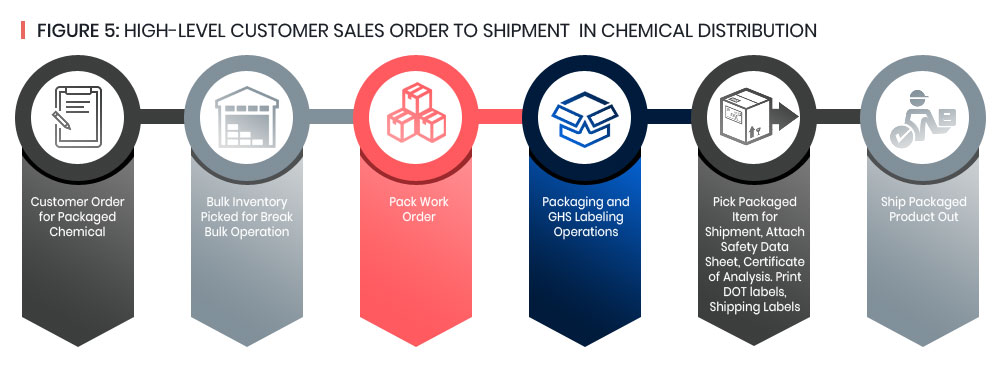
07. Billing
The final step in this process would be to send a bill to the appropriate bill-to address of the Customer.
What Does a Distribution Company Look Like in Microsoft Dynamics 365
Below is a quick view of what your company would look like within Microsoft Dynamics 365 assuming all required raw materials are available in stock.
01. Products
- This information is maintained within the Product Information Management (PIM) module, and for a chemical distribution company, it is the heart of supply chain and manufacturing.
- At a high level, it falls into the following categories:
| ITEM GROUP | TYPE | DEFINITION |
|---|---|---|
| ITEM – RM | RAW MATERIAL | INGREDIENT PURCHASED |
| ITEM – INT | INTERMEDIATE | PRODUCED AS PART OF THE FORMULATION |
| SKU | FINISHED PRODUCT | CONTAINERIZED FINISHED PRODUCT THROUGH A FORMULA |
| LABEL | PACKAGE – RAW MATERIAL | LABELLED RAW MATERIAL |
| KIT | FINISHED PRODUCT | PACKAGED INTO 1 CASE WITH SAME SKUS |
| BOX | PACKAGE – RAW MATERIAL | PACKAGE PURCHASED |
| CONTAINER (TOTE, DRUM, etc) | PACKAGE – RAW MATERIAL | PACKAGE PURCHASED |
| PACKAGE (CASES, KITS, etc) | PACKAGE – RAW MATERIAL | PACKAGE PURCHASED |
| SERVICES | SERVICE | |
| SUPPLIES | EXPENSED PACKAGING MATERIAL, LAB SUPPLIES, OFFICE SUPPLIES, etc. |
- On top of this, you need to define which of the inventory products require tracking by batch, location and license plate turned on, the coverage settings, lead times and other item attributes such as chemical properties, label elements (hazard statements, pictograms, hazard symbols, etc.)
02. On-Hand Inventory
- You need a detailed view of inventory slice-and-dice by batch, serial number, site, warehouse, location and license plate number (could be a pallet or other depending on how the containers need to be grouped) for each product. This view will provide a snapshot of inventory to multiple roles such as a planner, buyer, customer service representative, materials manager.
- Your controller will be most interested in an Inventory value report that shows the glimpse of inventory quantity, total value along with physical and financial cost by unit. Having a view into on-hand inventory value for both inventory and WIP would need to be defined that can be reconciled back to General Ledger.
- In Dynamics 365, there are many different ways of viewing slice and dice of inventory. One such screen is an on-hand list view that displays all available inventory based on the dimensions selected on the dimension display that allows a user to select site, warehouse, location, Batch, Serial Number etc.
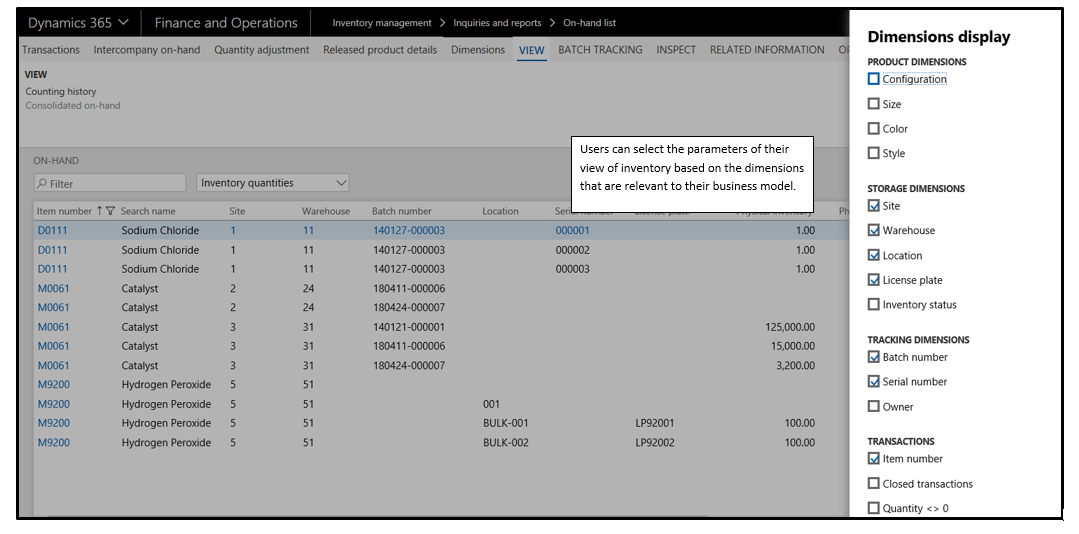

03. Sales Orders
- Your customer calls to place a sales order for chemical products, kits or cases. In Microsoft Dynamics 365, a customer can have the products shipped to their own ship-to addresses or a drop ship address directly to their customer.
- Customer service creates a sales order with customer’s PO number and adds the kits or cases that need to shipped to the customer. The order can include specific instructions and notes as requested by the customer. Notes / attachments can be categorized to be printed on specific downstream documents such as packing slip, BOL etc.
- For distribution, Microsoft Dynamics provides a DOM (Distributed Order Management) indicator that allows the user to have a complete picture of inventory across the warehouse and handle order process to fulfill orders correctly.
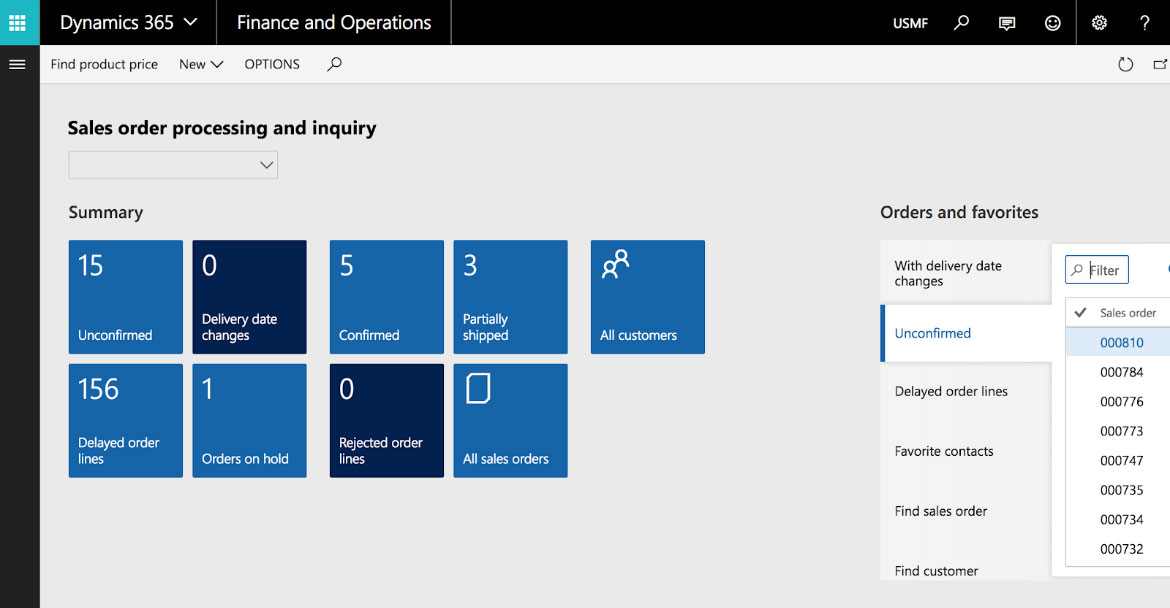
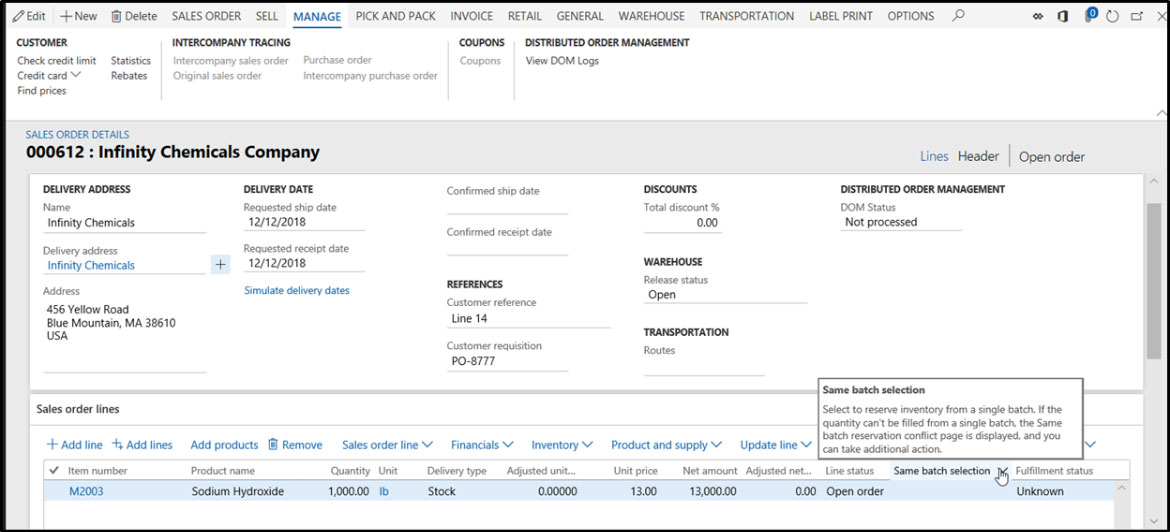

04. Master Planning
- Depending on how the packaged items have been setup for planning (Min/Max, Requirement or Period) with the lead times and calendar setup, you have the ability to run a master plan in a regeneration mode – which nets all supply, demand, planned supply and forecasted demand or in net change that considers changes since the last full run of MRP.
- Typically you would run master planning for all items or items under a certain coverage group, a good example would be your “Fast moving items”.
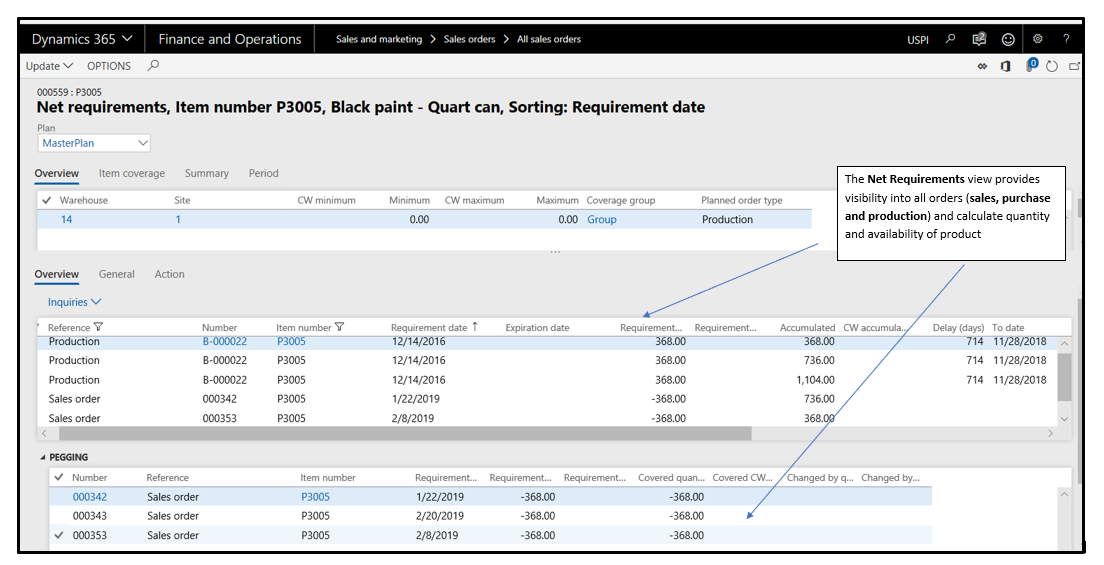
05. Production of Kits and Cases
Microsoft Dynamics 365 has extensive functionality to support all production operations for the Chemical Distribution company. The operations can be streamlined to be made really simple or suit your current state on the shop-floor.
5.1 Production Order
- You can go with a Production order in Microsoft Dynamics 365 if you need your finished goods produced, work planned along with tracking operations, routes, resource cost and scheduling of jobs.
- There are different views available that would be based on security roles and privileges that allow different sets of users to view the production order, picklists, route cards or job cards.

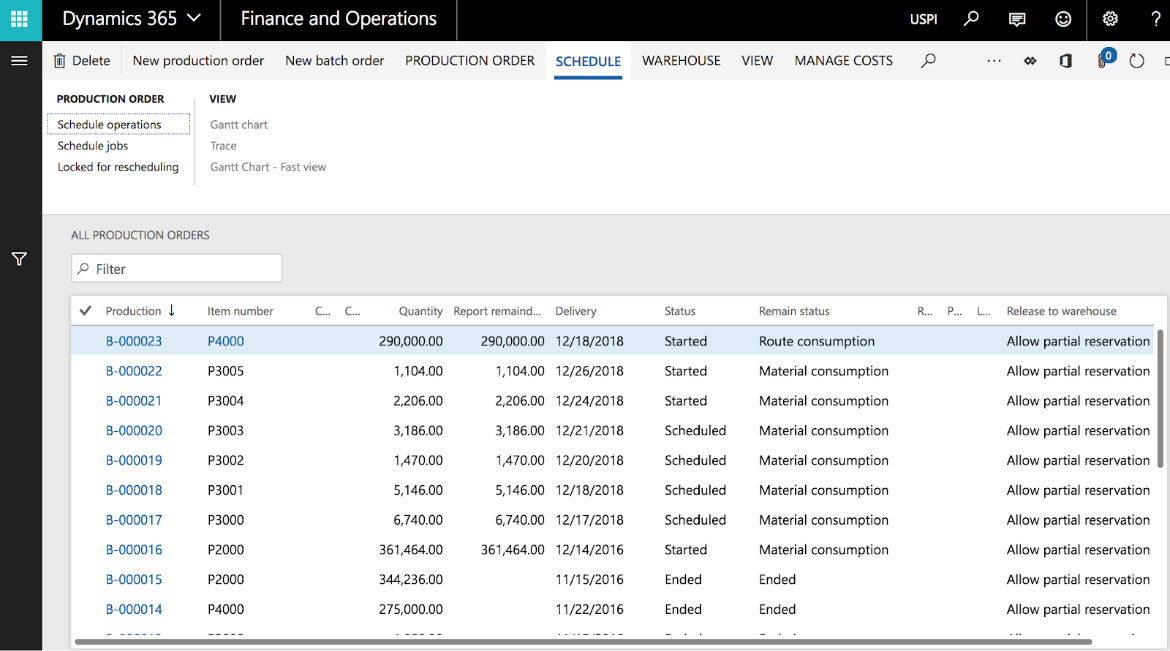
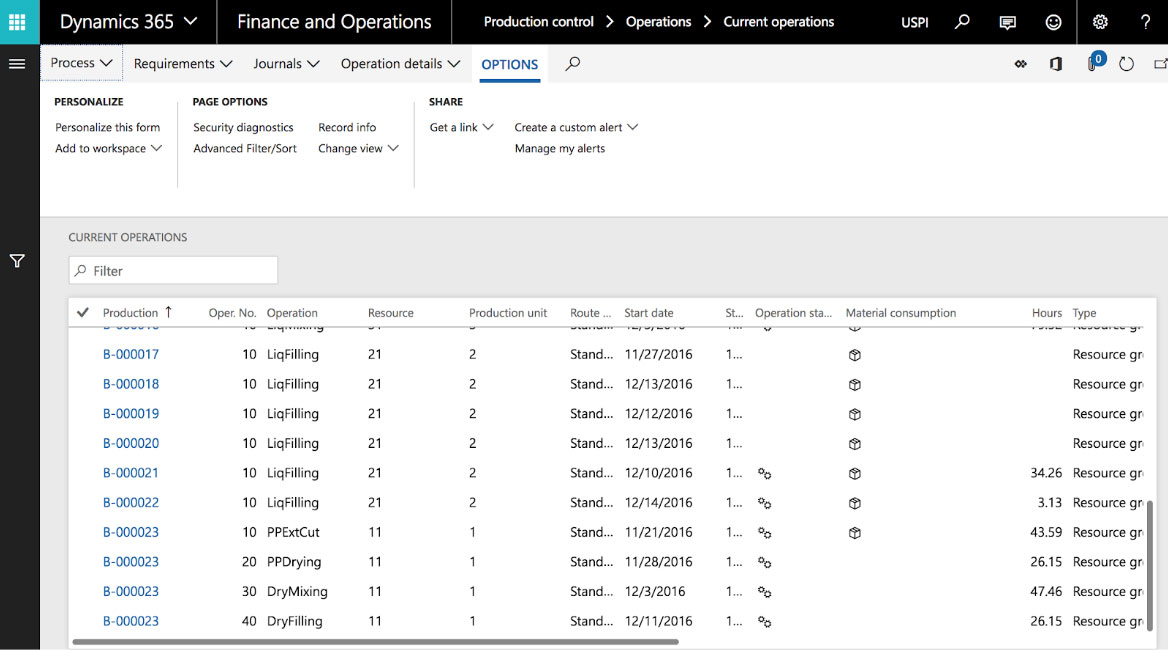
5.2 Visual Planning and Scheduling of Jobs Using Production Gantts
- D365 has a powerful visual planning and scheduling tool that comes handy when scheduling a job / operation for all sales orders planned during a day, week or a month.
- It gives you the ability to reschedule and re-prioritize an operation or a work order depending on customer demand.

I recommend reading one of our prior blogs – “Operational Challenges in a Chemical Company: Key Solutions”. This blog will help you learn more on production and operations.
5.3 BOM Journal
- BOM Journals are used in the production process to add finished goods into inventory and to reduce the inventory components within the Formula or Bill of Material.
- BOM Journals help reduce the process time instead of using a full production order.
- A BOM journal, however, cannot perform functions like tracking jobs and operations and cannot be a part of visual planning.
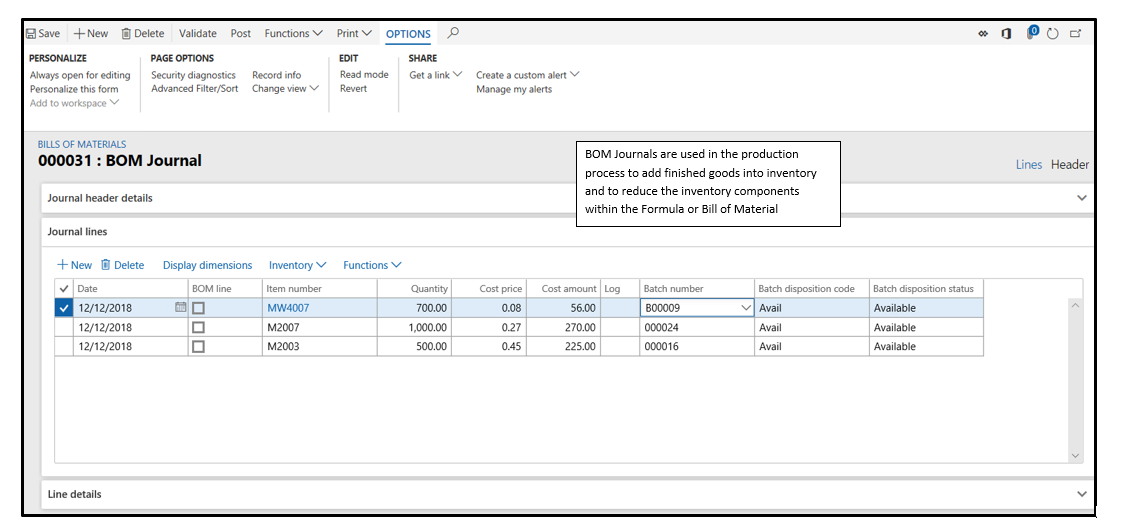
06. Shipments
- The difference between domestic and international shipments is the add on export documentation that needs to be attached for international shipments.
- For most customers you need a common set of documentation that can be generated from the application.
- With advanced warehouse management, outbound work and shipment wave is created to pick products and put-away for packaging (There is too much to discuss about warehouse work and will be a topic of its own).
Before the product can be shipped, Microsoft Dynamics 365 enhanced with the power of Integrated Chemical Management (iCM) prints the below documentation package.
- Warehouse Work – Displays sales order number, work number in barcode format, product batch/ lot number in barcode format, license plate information in barcode format, put-away location in barcode format. Work is processed using a barcode device.
- Packing Slip – Displays the sales order number, customer PO number, delivery method, ship date, product to be delivered, quantity delivered, unit of measure, batch number/ lot number delivered, ship to address, ship from address, back-order quantity (if any), etc.
- Bill of Lading (BOL) – Displays ship to address, sales order number, hazard information, pallet information, number of boxes, master bill of lading number (if any), etc.
- Certificate of Analysis (C of A) – Displays product, company logo (for private label customer logo), test specifications, test results (min/ max or average), visual, fraction, integer tests, approver information, expiration dates/ best before dates, test dates, etc.
- Safety Data Sheets (SDS) – Displays product label information, pictograms, hazard statements, warning statements, transportation/ DOT information, by country, by language, CAS number information, etc.
- Shipping Labels – Displays company logo, ship to address, product information, etc.
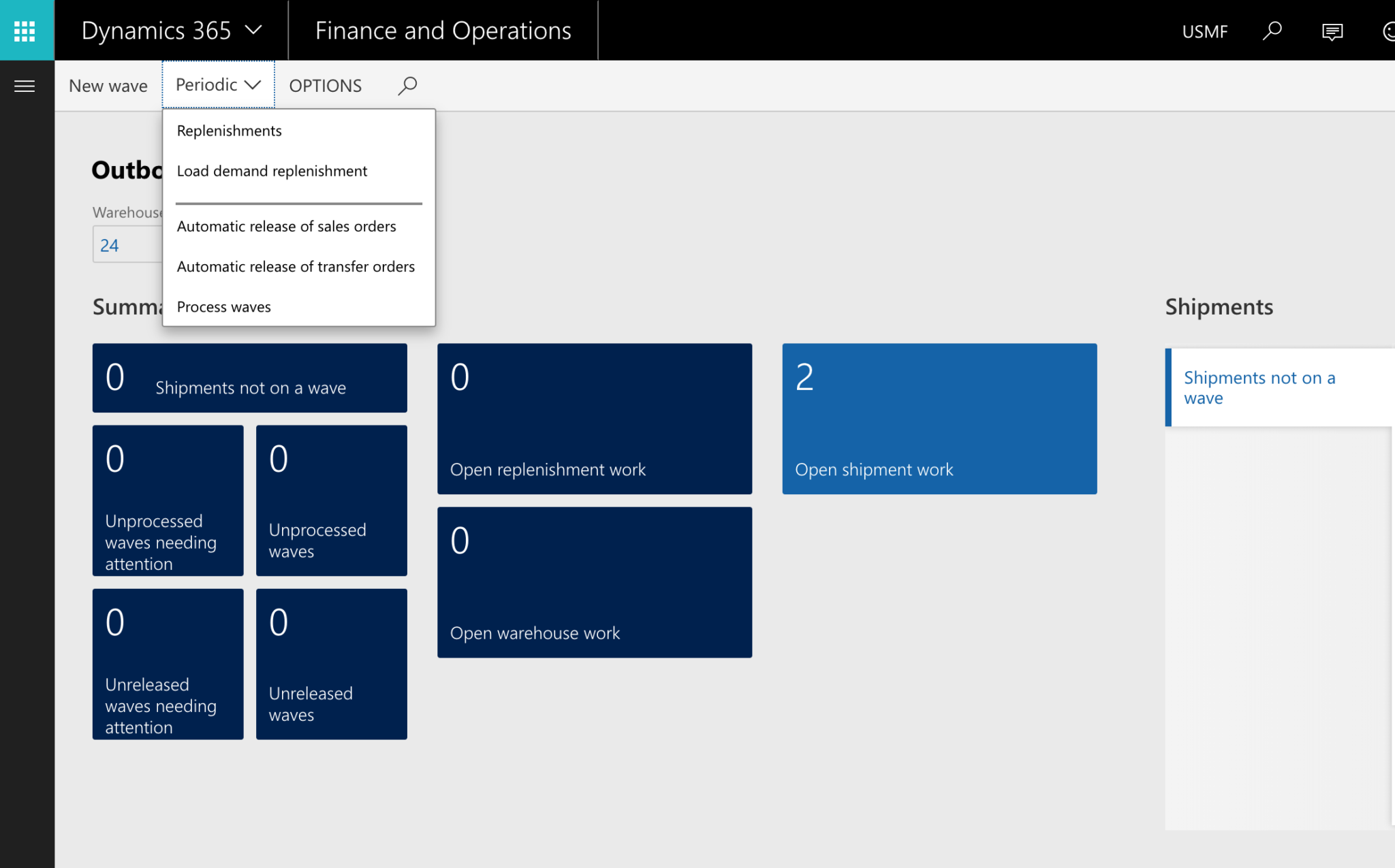
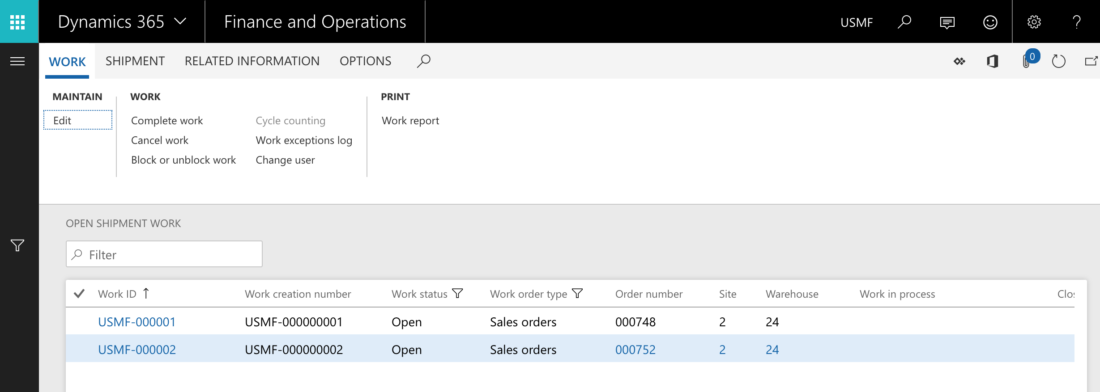
07. Invoicing
After shipments are done, Microsoft Dynamics 365 gives you the ability to create invoices in a batch mode or mass select shipments for invoicing. The system also gives you the ability to print or email a specific customer email address.

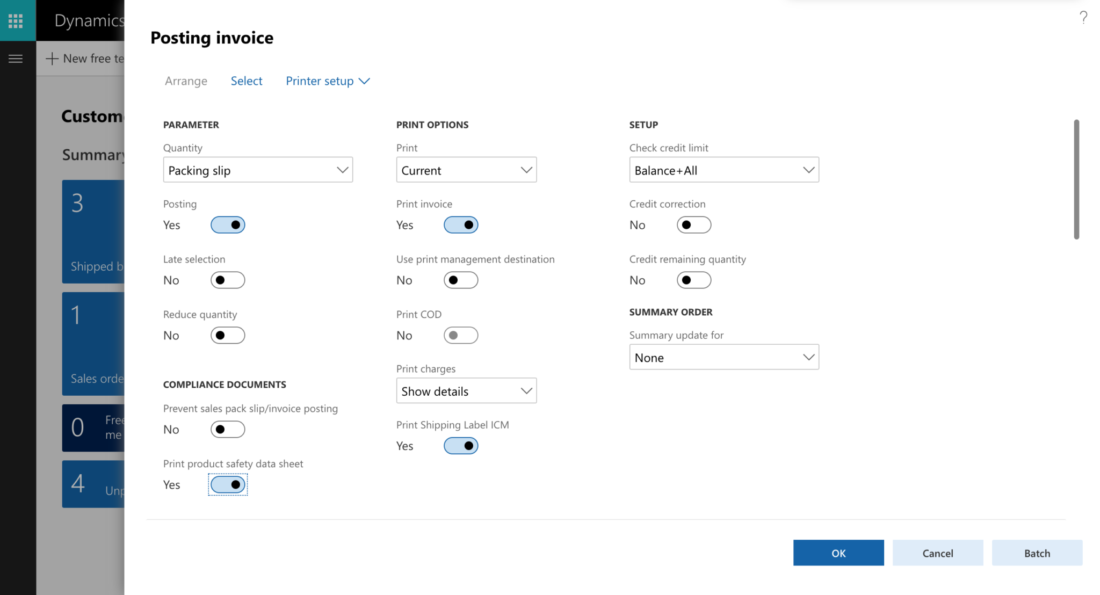
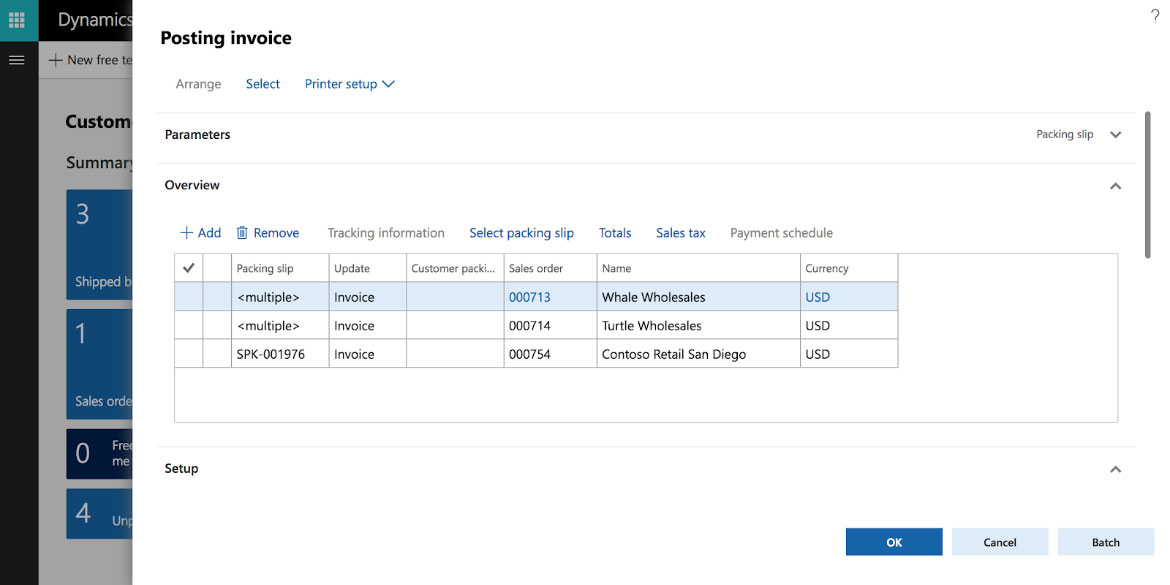
Key Takeaways
- The above information should give you a decent picture in understanding your current state and what your company would look like in Dynamics 365.
- You can streamline your processes with a robust, simple, easy to understand yet powerful system like Microsoft Dynamics 365.
- The ability to integrate with other Microsoft applications allows your company to fully integrate and enhance efficiencies.
- Power tools such as master planning and production gantt charts provide the ability to plan and schedule your production operations.
- Microsoft Dynamics 365 will help you boost your business efficiencies through the “one Microsoft ecosystem” and enhances the interoperability across other Microsoft applications.
- Microsoft Dynamics 365 has the ability to address most, if not all requirements for a Chemical Distribution company out-of-the-box.













Facebook Conversations